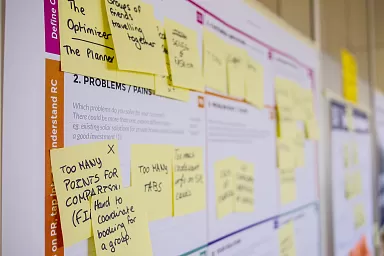If you’re not ready for a full website redesign, you can still work to improve your nonprofit site. A website audit is the perfect tool to help identify the areas that need the most help on your existing site, so you can stay with your current site longer.
With a website audit, web developers focus on various aspects of the functionality of your site, ranging from the technical to social solutions.
Below are the 5 areas Lucid Fox reviews when performing a website audit.
1. Technical Performance
First, we look at your website’s technical performance. By doing this, we identify areas for improvement so your entire site will run smoothly and securely.
We will look for:
- Broken links
- Page load speed
- Image optimization
- Secure practices
- … and more.
We often find that images on websites are too big and are not optimized for web browsing. This slows down your site unnecessarily.
2. Technical SEO Audit
Next, we look at how your website performs in terms of SEO (Search Engine Optimization). Is your site ranking high in Google and other search engines?
There are several factors that impact your nonprofit site’s SEO.
Structured data adds details to the preview text in search results. Having this gives you more power to control what shows up on Google when someone is searching for something related to your nonprofit. This is your website’s way of talking to search engines by creating “rich snippets.” People using Google love to see these types of rich content, because it helps them understand what they can really expect by clicking on your search result.
Metadata and Open Graph tags provide information about your website. Information from these tags aren’t always visible to the reader, but can help search engines figure out what your site is about. Some meta tags include:
- Content type
- Title
- Description
- Viewport (mobile vs desktop, for example)
Open Graph meta tags are specifically to help you control what information shows up when a page from your site is shared on social media, like Facebook.
Sitemaps are crucial because it helps search engines understand your site by showing the search engine how your website is organized. With a clear sitemap, Google will be able to “crawl” your site and will build trust with the search engine, thus bringing your website higher up in search results.
We’ll also see how your website does in the Google Search Console, which looks at traffic, performance, and other issues to help make sure your site will do well in search results.
The most common issue we find with SEO? Sites often aren’t optimized for Google. This can be due to a lack of structured data or errors within that structured data, which affects the likelihood that someone will click on your result in Google over all the others because your result doesn’t display with rich content. Sure, these things matter less than content itself for ranking the site, but you still want people to be enticed to click through.
3. Accessibility Audit
Is your organization’s website ADA compliant?
We go through your website to make sure it meets WCAG 2.1 requirements. This means your site needs to have:
- Clear, high-contrast, readable text
- Images that also have an “alt tags,” or alternative text
- Audio and video transcripts and/or captions
- A colorblind-friendly design
- Zoomability
- …and much more
In this post all about accessibility for nonprofit websites, we go into depth about what accessibility is, why it’s important, and tips on how to make your site more accessible.
It’s important that your website meets accessibility guidelines so that everyone can consume your webpage, no matter what disabilities or temporary hindrances they may experience.
When we perform website audits, we often find that websites aren’t ADA compliant. Also, the structure of your site may not be easy to understand or follow; you want to avoid a confusing website so that people can find what they need quickly and easily.
4. Usability and a Positive User Experience
UX (User Experience) Design is crucial for your organization’s website. When considering the usability of your site, we look at:
- Information architecture
- Design
- Analysis of user behavior via Google Analytics
- Content (for readability and tone)
Provide a positive user experience, and people that have a good interaction with your site will return, support your cause, and spread the word about your mission.
5. Diversity and Inclusion
Finally, we review your site for diversity and inclusion. We want to make sure your nonprofit website is representative of a varied population, so we look for diverse representation and also make sure your content doesn’t use exclusionary language.
After a website audit, you will have a comprehensive list of improvements to make to your current website. This can help your current site last longer by fixing the things found in an audit, especially if you’re not ready to invest in a new website.
If you’re interested in a website audit to gain clarity on how you can improve your current site, contact us today.
Psst… Later, if you decide to work with us for a new website design, we’ll also deduct the cost of the audit from your full project, since it helps with decisions during the strategy phase of your project.
